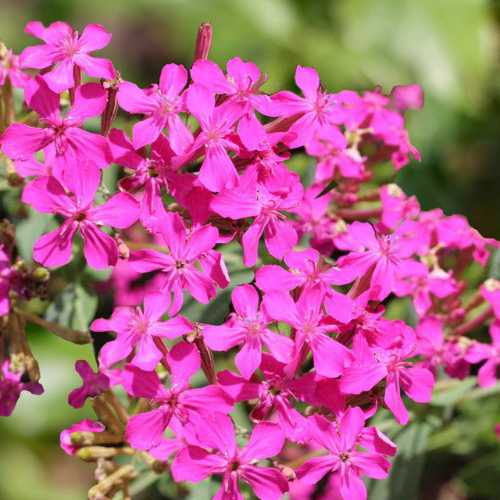
How To Grow Catchfly From Seeds
Share
Catchfly, also known as Silene, is a beautiful flowering plant that adds color to your garden and attracts pollinators.
The plant produces clusters of small, five-petaled flowers in shades of pink, red, white, or purple.
Growing catchfly from seeds is an easy and affordable way to add this plant to your garden.
Here's a guide to help you grow catchfly from seeds:
Step 1: Choose a location with well-drained soil and full sun to partial shade. Catchfly prefers well-drained soil and a location that receives full sun to partial shade. It's important to choose a location with good drainage because catchfly does not tolerate wet soil, which can lead to root rot.
Step 2: Sow seeds in the spring. Catchfly seeds can be sown directly in the garden in the spring after the last frost date. Sow the seeds about ¼ inch deep and keep the soil consistently moist until they germinate, which usually takes 7 to 14 days.
Step 3: Thin out seedlings. Once the seedlings have emerged, thin them out to about 6 to 8 inches apart. This will give each plant enough room to grow and develop properly.
Step 4: Water and fertilize the plants regularly. Catchfly plants need regular watering, especially during dry spells. In general, the plants should receive about 1 inch of water per week. It's also a good idea to fertilize the plants once a month with a balanced, all-purpose fertilizer.
Step 5: Deadhead the spent flowers. Catchfly produces flowers continuously from mid-summer to fall. To encourage continued blooming, deadhead the spent flowers by removing the old blooms and their stems.
Step 6: Protect the plants from extreme cold and wet conditions. Catchfly is winter hardy in most areas, but it can be damaged by extreme cold or wet conditions. If you live in a climate with harsh winters, it's a good idea to mulch the plants with a 2- to 3-inch layer of organic material to protect the roots from freezing.
In conclusion, growing catchfly from seeds is an easy and affordable way to add this beautiful flowering plant to your garden.
With proper care, the plants will provide color and attract pollinators for many years to come.

